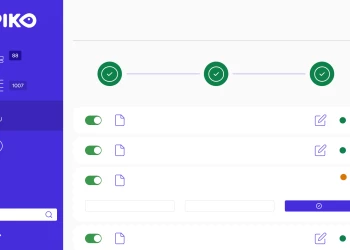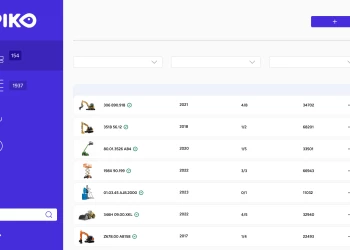Construction asset management: guide to efficient inventory and asset management

Understanding Construction Asset Management
Construction asset management is a critical aspect of the construction industry, encompassing the strategic process of managing physical assets throughout their lifecycle. Understanding what is asset management in construction starts with recognizing its core purpose: optimizing asset utilization while ensuring cost-effectiveness and operational efficiency.
In the asset management in the construction industry, the lifecycle of assets begins with the acquisition of machinery, equipment, and tools, followed by their deployment, maintenance, and eventual disposal or repurposing. Asset management for construction aims to maximize the useful life of assets and minimize downtime. This involves balancing availability with maintenance and operating costs.
By meticulously tracking asset conditions and maintenance schedules, companies can prevent unexpected breakdowns and avoid costly delays. Well-maintained assets enhance safety on construction sites, reducing the risk of accidents and liabilities, and ensure operational reliability, helping projects stay on time and within budget.
Understanding construction asset management is about realizing the interconnected nature of asset utilization, strategic planning, and technological support to achieve a seamless and productive workflow throughout the construction project lifecycle.
Effective Inventory Management in Construction
Effective inventory management is crucial to ensure smooth operations and timely project delivery in the construction industry. This approach helps to minimize storage costs and reduce the risk of overstocking or stockouts.
In the realm of remote construction asset management, digital tools play a pivotal role. They enable real-time monitoring and control over inventory, regardless of the location of the construction site. By adopting digital asset management construction solutions, companies can streamline their operations, improve efficiency, and ensure that all assets are accounted for at any given time.
With integrating inventory management practices offered by some softwares, construction firms not only achieve better resource allocation but also prevent costly delays. Furthermore, leveraging document management software aids in maintaining accurate records of inventory movement and asset utilization, fostering a more organized and efficient construction process.
The Role of Software in Construction Asset Management
In the realm of construction, the integration of construction asset management software transforms how firms handle assets. Construction equipment management software streamlines procurement processes, ensuring optimal equipment acquisition and reducing overhead costs. It also uses advanced algorithms for maintenance scheduling, minimizing downtime and extending the lifespan of assets. Construction equipment asset management software enhances inventory control by allowing real-time tracking of assets, reducing the risk of misplaced or underutilized equipment, and ensuring resources are allocated efficiently.
Implementing asset management in construction also involves leveraging advanced tools such as document management software for efficient record-keeping. These tools provide a centralized platform for tracking asset data, maintenance logs, and compliance documents, offering real-time insights for better decision-making and resource allocation. Employing digital construction asset management software not only boosts efficiency but also improves accountability and regulatory compliance.
Tracking and Managing Construction Assets
Utilizing advanced technologies construction professionals can monitor many various aspects, sometimes such as equipment location, usage, and maintenance requirements in real-time. Construction equipment tracking systems are invaluable for ensuring that each asset is accounted for and deployed efficiently.
One of the key benefits of asset tracking for construction is the ability to gather precise data. Understanding where heavy equipment is at all times can significantly reduce operational downtime and improve project timelines. In addition, accurate data recording aids in predictive maintenance, thus extending the lifespan of costly machinery.
AI Document Management in Construction
One of the softwares that can also enhance management of construction machinery and equipment is an document management system which provides an innovative approach to handling extensive project documentation. Implementing AI document processing streamlines the cumbersome tasks of document classification and ensures precise searchability. With these advancements, construction professionals can access vital information swiftly, enhancing decision-making processes.
AI document systems also offer exceptional benefits by gathering essential data from vast arrays of documents. This technology significantly reduces the time spent on manual reviews and mitigates the potential for human error. With a usage of AI in asset management, construction firms can maintain accurate records, facilitating better resource allocation and minimizing operational risks.
Furthermore, AI-powered document management enhances predictive analytics and risk management, which are critical components to project success. The integration of AI tools in document management for construction not only boosts efficiency but also promotes knowledge sharing within the industry. This technological transformation equips companies with a competitive edge, enabling them to navigate complex projects with greater agility and insight.
Get started today! Book a free demo to see how PIKO can help you manage your fleet structure and assets. With features like bulk document uploads, QR codes for on-site access, and flexible access levels, you’ll have full control over your machinery’s documentation. Plus, our experts can assist with easy integration into your company’s systems.






